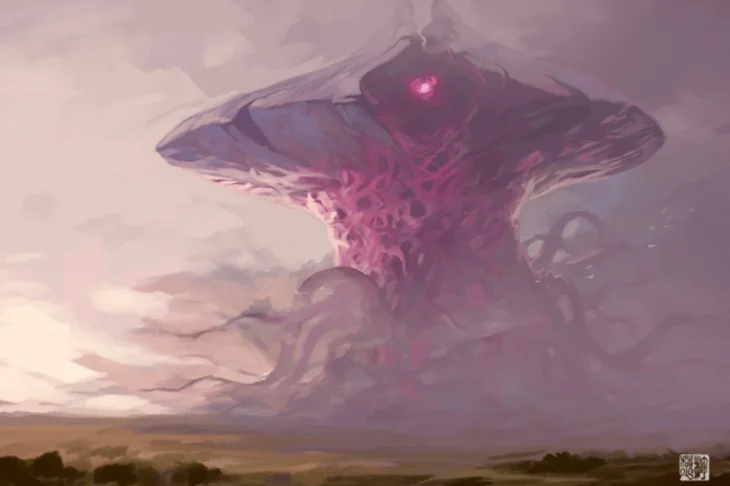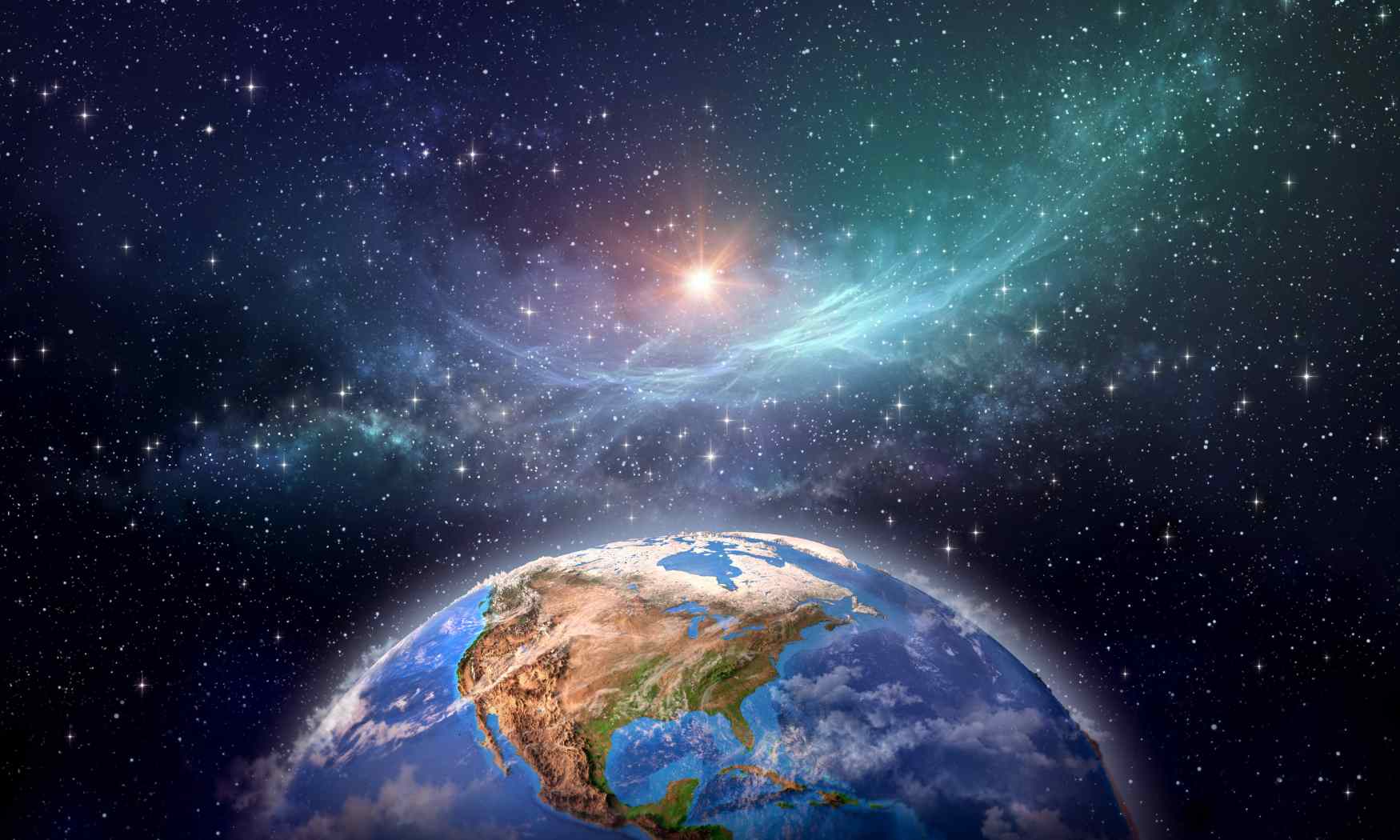
Lovecraftian Cosmic Horror

Lovecraftian cosmic horror is a subgenre of horror fiction that focuses on the terrifying unknown, a sense of humanity’s insignificance in the universe, and the existence of otherworldly, ancient entities.
It is named after its creator, H.P. Lovecraft, an American writer whose works in the early 20th century laid the foundation for modern horror fiction.
Lovecraft’s distinctive style and themes have attracted countless fans, inspired numerous authors, and given birth to a fascinating universe filled with eldritch horrors and existential dread.
Here, we provide an in-depth exploration of Lovecraftian cosmic horror, from its defining characteristics to its enduring influence on contemporary horror.
Who was Lovecraft?
Howard Phillips Lovecraft, born in 1890, was an influential figure in the development of horror fiction and has remained so over the years.
His work, filled with macabre and imaginative elements, broke away from the traditional Gothic horror of the time. It introduced a new kind of fear: the fear of the unknown. Lovecraft’s stories often involve hapless protagonists who stumble upon terrifying secrets that reveal the insignificance of human beings in the face of a vast, indifferent cosmos. This unique approach to horror would later become synonymous with the term Lovecraftian cosmic horror.
As we embark on this journey into this dark and mysterious world, prepare to confront the unknown, to question the very fabric of reality, and experience the chilling realization that humanity’s place in the cosmos may be far more insignificant than we could ever have imagined.
What are the Characteristics of Lovecraftian Cosmic Horror?
Lovecraftian cosmic horror is distinguished by several defining characteristics that set it apart from other horror genres. These combine to create an unnerving atmosphere, challenge our understanding of reality, and emphasize humanity’s vulnerability in the face of cosmic forces beyond our comprehension.
Focus on the fear of the unknown
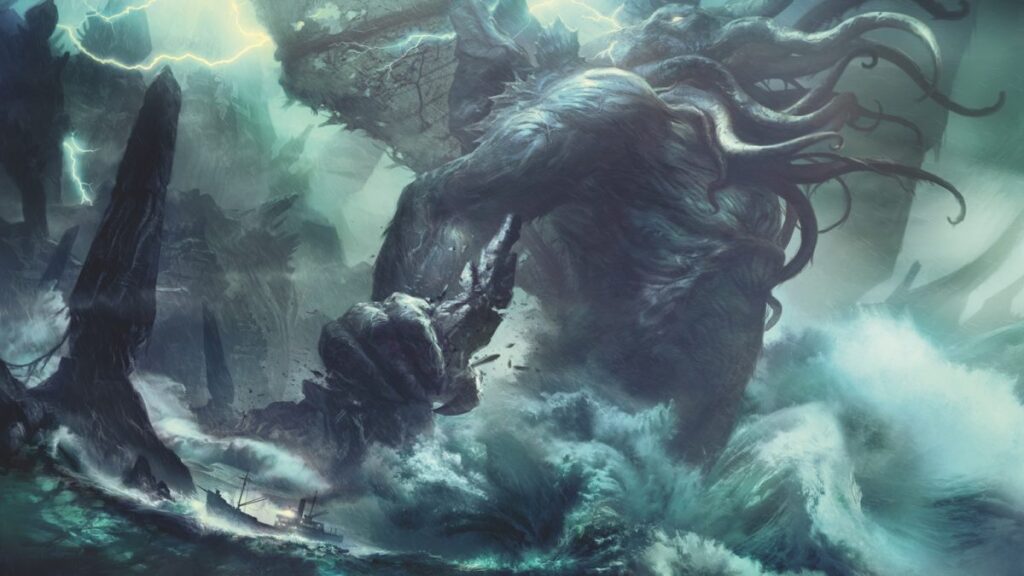
Central to Lovecraftian cosmic horror is the fear of the unknown, a concept that plays a significant role in the psychological impact of his stories. Lovecraft believed that fear was the most primal and powerful emotion, and that fear of the unknown was the driving force behind everything else.
Instead of relying on traditional horror tropes such as ghosts or vampires that were popular at the time, Lovecraft’s stories drew their terror from the unfathomable mysteries of the cosmos, the existence of ancient and powerful entities beyond human understanding, and the implications of our limited knowledge in the grand scheme of the universe.
Read Lovecraft’s Supernatural Horror in Literature here.
Cosmicism and the insignificance of humanity
Lovecraftian cosmic horror is grounded in the philosophical concept of cosmicism, the idea that human beings are insignificant specks in an uncaring, infinite universe. His stories often emphasize the vastness of time and space, the insignificance of human achievements, and the futility of our attempts to comprehend or influence the cosmic order.
This theme serves to heighten the terror and alienation experienced by the protagonists as they confront the crushing realization that humanity’s place in the universe is insignificant and precarious.
Eldritch beings and ancient entities
Lovecraft’s stories are populated by a pantheon of unimaginably powerful Eldritch Beings, malevolent, and alien entities that exist beyond the boundaries of human understanding.
These beings, often referred to as the Great Old Ones or Outer Gods, are indifferent or even hostile to humanity, and their mere presence can drive mortals to madness. Some of the most famous examples include Cthulhu, Nyarlathotep, and Azathoth. These entities embody the fear of the unknown and our insignificance before them as they possess abilities and knowledge far beyond our comprehension.
Non-Euclidean geometries and otherworldly settings
The settings of Lovecraftian cosmic horror stories often defy conventional understanding, featuring otherworldly landscapes, impossible architecture, and non-Euclidean geometries.
These elements contribute to the unsettling atmosphere of the stories, as they challenge the reader’s perception of their reality. Lovecraft’s vivid descriptions of these environments instil a sense of unease, disorientation, and awe, further emphasizing the theme of humanity’s smallness in the face of a vast universe.
Psychological terror and madness in Lovecraft’s cosmic horror
Lovecraftian cosmic horror has very little in the way of graphic violence and gore. Instead, it relies on psychological terror. The protagonists in his stories are often driven to madness or despair as they uncover the horrifying truths about the universe and the cosmic entities that inhabit it.
The creeping dread and mounting insanity experienced by these characters serve to intensify the reader’s sense of unease, as they grapple with the same horrifying revelations in the comfort of their homes.
Use of a first-person narrative and epistolary format
Lovecraft frequently employed first-person narratives and epistolary formats in his stories, using diary entries, letters, or manuscripts to convey the protagonist’s experiences.
This narrative style allows the reader to experience the story from the protagonist’s perspective, heightening the emotional impact and immersion in the terrifying world of Lovecraftian cosmic horror.
Which Are Lovecraft’s Most Read Stories?
H.P. Lovecraft’s body of work encompasses numerous short stories, novellas, and collaborations that have shaped and defined the Lovecraftian cosmic horror genre over the years.
While his entire oeuvre is worth exploring, a few key works stand out for their impact, themes, and enduring popularity. All these stories are worth reading. It’s worth noting that many of Lovecraft’s works are now in the public domain so you can pick up copies of all his stories online for a few pounds or free.
The Call of Cthulhu
- Synopsis: Published in 1928, “The Call of Cthulhu” is perhaps Lovecraft’s most iconic work. The story follows the investigations of Francis Wayland Thurston, who uncovers a series of disturbing events and cults connected to the ancient cosmic entity known as Cthulhu. As he delves deeper, Thurston learns of the horrifying truth about Cthulhu and its impending awakening from a deep slumber beneath the ocean.
- Themes and motifs: “The Call of Cthulhu” epitomizes many of the key themes of Lovecraftian cosmic horror, including the fear of the unknown, the insignificance of humanity, and the existence of ancient, powerful entities. The story also explores the concept of forbidden knowledge and the psychological toll it takes on those who uncover it.
- Impact on the Cosmic Horror genre: With its introduction of Cthulhu and the wider pantheon of cosmic deities, “The Call of Cthulhu” has become a seminal work in the Lovecraftian cosmic horror genre. Its influence can be felt in countless stories, films, games, and other media that have drawn inspiration from Lovecraft’s creation.
The Shadow over Innsmouth
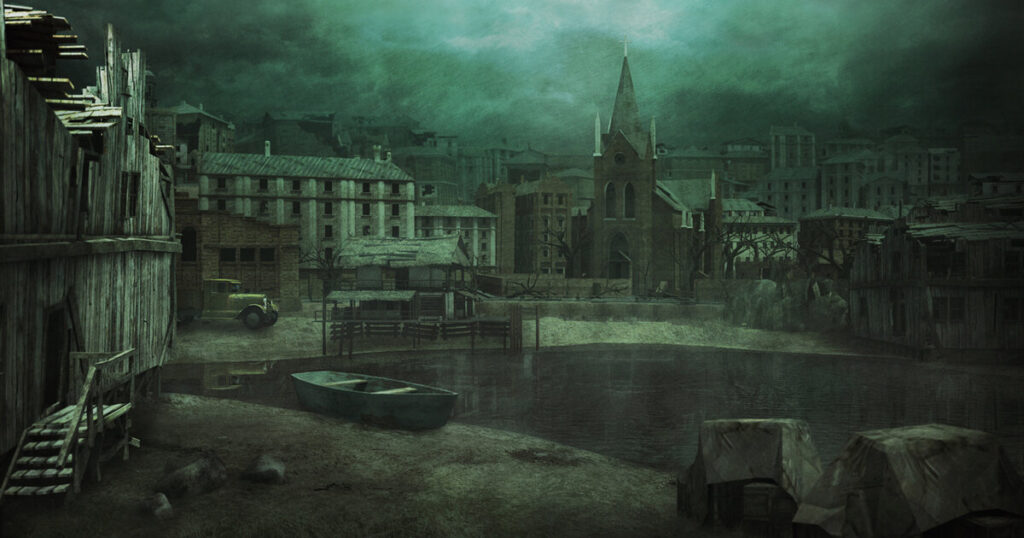
- Synopsis: Published in 1936, “The Shadow over Innsmouth” tells the story of Robert Olmstead, a traveller who visits the isolated and decaying town of Innsmouth. As he explores the town and interacts with its strange inhabitants, Olmstead uncovers a terrifying secret involving an ancient, monstrous race known as the Deep Ones and their pact with the town’s residents.
- Themes and motifs: The story explores themes of isolation, xenophobia, and the corrupting influence of ancient forces. It also reinforces the concept of humanity’s insignificance, as the Deep Ones are revealed to be part of a vast, uncaring cosmic order that predates human civilization.
- The creation of a shared universe: “The Shadow over Innsmouth” is notable for its expansion of Lovecraft’s fictional universe, as it establishes connections with other stories, including “The Call of Cthulhu” and “The Dunwich Horror.” These connections laid the groundwork for the development of the Cthulhu Mythos.
At the Mountains of Madness
- Synopsis: Serialized in 1936, “At the Mountains of Madness” is a novella that follows a doomed Antarctic expedition led by Professor William Dyer. As the team uncovers the remains of an ancient, alien civilization, they are confronted with the horrifying truth about Earth’s prehuman history and the existence of unspeakable cosmic entities.
- Themes and motifs: The novella explores themes of isolation, forbidden knowledge, and the terror of the unknown. It also delves into the concept of non-Euclidean geometries and otherworldly environments, which are hallmarks of Lovecraftian cosmic horror.
- Exploration of the unknown: “At the Mountains of Madness” is a prime example of Lovecraft’s ability to evoke a sense of awe and terror through the exploration of the unknown. The story’s Antarctic setting and the revelations about the ancient civilization heighten the sense of cosmic dread and humanity’s insignificance.
Other notable stories
- The Colour Out of Space: A tale of an otherworldly entity that brings devastation to a rural community and alters the very fabric of reality.
- The Dunwich Horror: A chilling account of a monstrous offspring born from an unholy union between a human woman and an ancient cosmic deity, and the havoc it wreaks upon a small New England town.
- The Whisperer in Darkness: A suspenseful narrative involving extraterrestrial beings from the distant star system of Yuggoth, who establish a sinister foothold on Earth and engage in a terrifying campaign of manipulation and deceit.
These key works, along with many others in Lovecraft’s oeuvre, demonstrate the breadth and depth of Lovecraftian cosmic horror. They offer a fascinating exploration of the fear of the unknown, the insignificance of humanity, and the existence of powerful, ancient entities that defy comprehension. These stories have had a lasting impact on the horror genre and continue to captivate readers with their unique blend of terror, imagination, and cosmic dread.
You can read all these works and more for free online here.
The Cthulhu Mythos: Cosmic Horror at its Best
The Cthulhu Mythos is a shared fictional universe that encompasses the cosmic entities, ancient races, and forbidden knowledge found within Lovecraft’s stories and those of other authors who have expanded upon his work.
This interconnected web of themes and concepts has become an integral part of the Lovecraftian cosmic horror genre, providing a rich and immersive backdrop for countless tales of terror.
Definition and origins
The term “Cthulhu Mythos” was coined by August Derleth, a contemporary of Lovecraft and fellow writer who played a significant role in preserving and promoting Lovecraft’s work after his death.
While Lovecraft himself never used this term, the concept of a shared universe populated by cosmic deities, alien races, and ancient secrets can be found throughout his works. The Cthulhu Mythos encompasses not only Lovecraft’s creations but also those of other authors who have contributed to the expanding universe.
Core elements and structure of Lovecraftian cosmic horror
- Deities and alien races: The Cthulhu Mythos is populated by a vast array of cosmic entities, such as the Great Old Ones and Outer Gods, that exist beyond human understanding. These beings possess powers and knowledge far beyond our comprehension, and their influence often extends across time and space. Some of the most well-known examples include Cthulhu, Nyarlathotep, and Yog-Sothoth.
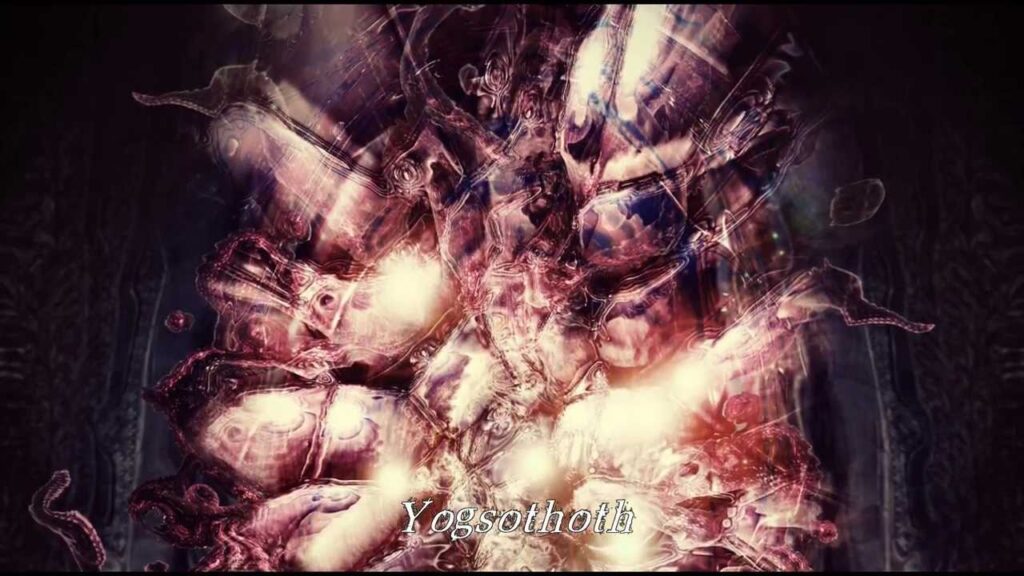
- Tomes of forbidden knowledge: Within the Cthulhu Mythos, various books and manuscripts contain dangerous and arcane knowledge about cosmic entities and their machinations. These texts, such as the Necronomicon and the Pnakotic Manuscripts, often play a crucial role in the stories as characters who delve into their secrets risk madness and destruction.
- Cults and secret societies: Lovecraft’s universe is rife with secretive organizations and cults that worship the cosmic entities and seek to further their sinister agendas. These groups, such as the Esoteric Order of Dagon from “The Shadow over Innsmouth” or the Starry Wisdom Cult from “The Haunter of the Dark,” are often driven by a twisted desire for power or a misguided belief in the benevolence of their otherworldly patrons.
Expansion of the cosmic horror Mythos by other authors
- August Derleth: As one of Lovecraft’s closest friends and a fellow writer, Derleth played a significant role in preserving Lovecraft’s legacy and expanding the Cthulhu Mythos. He authored numerous stories set within the Mythos, often introducing new cosmic entities and concepts.
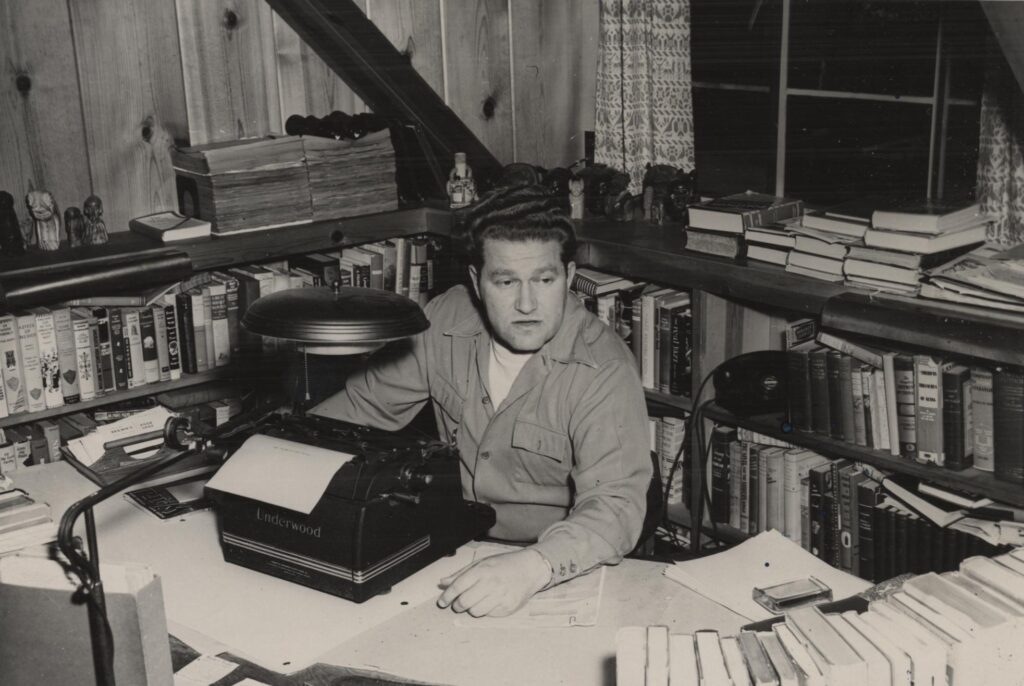
- Clark Ashton Smith: A contemporary of Lovecraft, Smith contributed to the Cthulhu Mythos with his unique blend of horror and fantasy. His stories, set in various fictional realms such as Hyperborea and Zothique, often intersected with Lovecraft’s universe, further enriching the Mythos.
- Robert E. Howard: The creator of Conan the Barbarian, Howard corresponded with Lovecraft and occasionally incorporated elements of the Cthulhu Mythos into his works. His contributions added a distinct layer of dark fantasy and adventure to the shared universe.
The Cthulhu Mythos serves as the foundation of Lovecraftian cosmic horror, providing a vast and interconnected tapestry of cosmic terror, ancient secrets, and otherworldly beings that continue to captivate and terrify readers to this day.
Lovecraft’s Influence on Modern Horror and Popular Culture
H.P. Lovecraft’s unique brand of cosmic horror has had a lasting impact on the horror genre and popular culture at large. His stories and the wider Cthulhu Mythos have inspired countless authors, filmmakers, game designers, and artists, ensuring that Lovecraft’s legacy endures and continues to evolve.
Influence on literature
- Contemporary horror authors: Many notable horror writers, such as Stephen King, Ramsey Campbell, and Thomas Ligotti, have cited Lovecraft as a significant influence on their work.
- The New Weird: Lovecraft’s influence extends beyond traditional horror, as demonstrated by the emergence of the “New Weird” literary movement. Authors like China Miéville, Jeff VanderMeer, and Caitlín R. Kiernan have embraced elements of Lovecraftian cosmic horror, blending them with aspects of science fiction, fantasy, and speculative fiction to create unsettling and imaginative works.
Influence on film and television
- Direct adaptations: Lovecraft’s stories have been adapted into numerous films and television series, with varying degrees of success. Notable examples include the 2005 film “The Call of Cthulhu,” which utilizes silent film techniques to evoke the atmosphere of the original story, and the television series “Lovecraft Country,” which combines Lovecraftian themes with social commentary on race and prejudice in 1950s America.
- Inspirational source: Many filmmakers have drawn inspiration from Lovecraft’s themes and ideas without directly adapting his work. Films like “Event Horizon,” “In the Mouth of Madness,” and “The Void” incorporate elements of Lovecraftian cosmic horror, such as the fear of the unknown, cosmic entities, and the fragility of human sanity.
Read our post: H P Lovecraft and The Thing.
Influence of cosmic horror on video games
- Lovecraftian-themed games: Video games have provided a fertile ground for exploring Lovecraftian themes and concepts. Titles like “Bloodborne,” “Eternal Darkness: Sanity’s Requiem,” and “Call of Cthulhu: Dark Corners of the Earth” fully immerse players in the unsettling and atmospheric world of Lovecraftian cosmic horror.
- Elements in broader games: Lovecraft’s influence can also be found in more mainstream games, such as “World of Warcraft,” “Fallout,” and “The Elder Scrolls” series, which incorporate various elements of the Cthulhu Mythos, such as ancient cosmic entities, forbidden knowledge, and otherworldly settings.
Influence on art and other media
Lovecraft’s impact extends to various forms of art, including visual arts, music, and tabletop role-playing games. Artists like H.R. Giger and Zdzisław Beksiński have incorporated Lovecraftian themes into their work, while bands like Metallica and The Darkest of the Hillside Thickets have drawn inspiration from the Cthulhu Mythos. The tabletop game “Call of Cthulhu” has introduced countless players to the world of Lovecraftian cosmic horror through collaborative storytelling and role-playing.

The Enduring Legacy of Lovecraftian Cosmic Horror
The enduring appeal of Lovecraftian cosmic horror lies in its ability to tap into our deepest fears and challenge our understanding of reality. H.P. Lovecraft’s vivid imagination and his skilful exploration of the unknown have given birth to a genre that continues to captivate and terrify readers, over a century since his first stories were published.
As we look to the future, it is clear that Lovecraftian cosmic horror will continue to evolve and inspire new generations of writers, artists, and fans. The genre’s themes of cosmic dread, the fear of the unknown, and humanity’s insignificance in the face of an uncaring universe remain as potent and relevant today as they were during Lovecraft’s time. As long as these fears continue to resonate, Lovecraftian cosmic horror will remain an essential and enduring part of the horror genre and our collective imagination.
Finally, you may be tempted to try and write your take on the Lovecraftian horror story, so here’s our quick guide.
How Do You Write Lovecraftian Cosmic Horror?
One of the defining aspects of Lovecraftian cosmic horror is the eerie and unsettling atmosphere that pervades the story. To create this in your writing, you’ll need to focus on three key elements: descriptive language, setting, and mood.
Use of descriptive language
Lovecraft was known for his vivid and often unsettling imagery, which plays a crucial role in establishing the atmosphere of his stories. To emulate this, use rich and evocative language that appeals to the reader’s senses, allowing them to visualize the strange and disturbing scenes you describe.
Don’t shy away from exploring the grotesque or surreal, as these elements can heighten the sense of dread and unease in your writing.
Setting
The setting of your story should be carefully chosen to support the atmosphere you aim to create. Lovecraft often opted for remote and isolated locations, such as desolate towns, ancient ruins, or deep within the sea.
These settings instil a feeling of vulnerability in the reader, as they imagine the protagonist being cut off from the safety and familiarity of the civilized world. Additionally, consider incorporating mysterious structures, like forgotten temples or underground lairs, to add a sense of history and dark secrets waiting to be uncovered.
Mood and tone
Crafting the right mood and tone is essential for immersing your readers in the world of cosmic horror. Start by building tension and unease throughout the story, slowly escalating the stakes and the sense of impending doom.
This can be achieved by providing glimpses of the unknown horrors that lurk in the shadows, without fully revealing them. The fear of the unknown is a powerful tool, as it allows the reader’s imagination to run wild, conjuring up their terrors. By carefully balancing suspense and revelation, you can create a haunting atmosphere that will linger with your readers long after they’ve finished the story.
Developing Memorable Characters in the Lovecratian Cosmic Horror Universe
Lovecraftian cosmic horror thrives on its fascinating and often tragic characters. To create memorable characters that resonate with your readers, focus on three key aspects: protagonists, antagonists, and character transformation.
Protagonists
The protagonists in cosmic horror stories are usually flawed, relatable individuals driven by a strong sense of curiosity and obsession. These qualities make them more susceptible to encountering the eldritch horrors that lurk in the shadows.
To create a compelling protagonist, provide them with a distinct personality, motivations, and backstory, which will help the reader empathize with their plight. In Lovecraftian horror, the protagonist’s vulnerabilities and weaknesses often become their undoing, so consider how these traits might shape their journey through the story.
Antagonists
The antagonists in cosmic horror play a crucial role in conveying the story’s themes and atmosphere. Lovecraft’s stories often feature eldritch abominations—indescribable, ancient beings that defy human understanding. These cosmic entities are typically indifferent to humanity, emphasizing the insignificance and fragility of human existence.
In addition to these otherworldly beings, consider including enigmatic cults or organizations that serve as secondary antagonists. These groups may worship or seek to exploit the cosmic horrors, adding layers of intrigue and conflict to your story.
Character transformation
One of the hallmarks of Lovecraftian horror is the transformation that characters undergo as they confront the unimaginable horrors of the cosmos. This often manifests as a descent into madness, as the protagonist’s mind struggles to comprehend the terrible truths they’ve uncovered. In writing your story, explore how exposure to the unknown affects your characters, both mentally and physically.
Consider how their relationships with other characters might deteriorate as they lose control, and how this loss of sanity can lead to tragic consequences. By delving into the psychological aspects of cosmic horror, you’ll create complex and memorable characters that will leave a lasting impact on your readers.
Incorporating Themes and Philosophy
Lovecraftian cosmic horror is heavily steeped in themes and philosophical concepts that drive the story and resonate with readers. To effectively incorporate these elements in your writing, focus on three key ideas: cosmicism, existential dread, and forbidden knowledge.
Cosmicism: The bigger it is the more frightening
At the core of Lovecraft’s works is the philosophy of cosmicism, which emphasizes the universe’s vast indifference to humanity and our insignificant place within it. Cosmicism posits that the cosmos is filled with ancient, incomprehensible beings and forces that dwarf human understanding and concerns.
By incorporating this philosophy into your story, you can create a sense of existential dread in the reader, as they come to grips with the terrifying reality of humanity’s powerlessness in the face of cosmic horrors.
Existential dread and Lovecraftian
Another key theme in Lovecraftian horror is the overwhelming fear of the unknown. As your characters encounter the unfathomable mysteries of the universe, they are forced to confront their mortality and insignificance.
This existential dread can be a powerful driving force in your story, as it pushes characters to confront the things they fear most. To effectively convey this sense of dread, consider using unsettling imagery, disturbing revelations, and the gradual erosion of your characters’ sanity.
Forbidden knowledge: The essence of Lovecraftian cosmic horror
The pursuit of knowledge, particularly the quest for forbidden or hidden truths, is a common theme in cosmic horror stories. This curiosity often leads characters down a dark and dangerous path, as they uncover secrets that were never meant for human eyes.
In your story, explore the consequences of seeking forbidden knowledge and the price that characters may pay for their curiosity. This can manifest in various ways, such as the loss of sanity, the destruction of relationships, or even the unleashing of unspeakable horrors.
Writing Style and Techniques
To effectively convey the atmosphere and themes of Lovecraftian cosmic horror, you’ll need to employ specific writing styles and techniques. Focus on these key aspects: pacing, unreliable narration, and intertextuality.
Pacing and Lovecraftian cosmic horror
The pacing of your story is crucial in building and maintaining the sense of dread and tension that characterizes cosmic horror. To achieve this, adopt a gradual escalation of horror, slowly revealing unsettling details and ramping up the stakes as the story progresses.
Be mindful not to reveal too much too soon, as withholding information can heighten suspense and keep readers engaged. Striking the right balance between suspense and revelation is key to crafting a compelling and immersive narrative.
Unreliable narration
Unreliable narration is a technique often employed in Lovecraftian horror to enhance the sense of uncertainty and disorientation. By presenting the story through the lens of a character whose sanity or perception may be compromised, you can further emphasize the fear of the unknown and the disquieting nature of the horrors your characters encounter.
This can be achieved by using first-person narration, journal entries, or even fragmented accounts from multiple characters. Experiment with different narrative styles to find the one that best suits your story and amplifies its unsettling atmosphere.
Intertextuality in Lovecraftian cosmic horror
Lovecraft’s works are renowned for their interconnected mythos, which comprises a shared universe of cosmic entities, locations, and artefacts. By incorporating elements of this mythos into your story, you can pay homage to Lovecraft’s legacy while also enriching your narrative with a sense of depth and history.
Building on established lore can provide a foundation for your story, while also offering opportunities to innovate and put your unique spin on the genre. Remember to strike a balance between embracing Lovecraftian elements and creating your original concepts, ensuring that your cosmic horror story stands out as a distinct and captivating work.
This should give you enough to start writing and exploring the world of Lovecraftian cosmic horror. Have fun and don’t have too many sleepless nights worrying about your insignificance!

